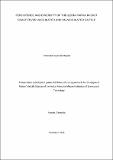Persistence and diversity of Theileria parva in East Coast fever vaccinated and unvaccinated cattle
Abstract
Infection and Treatment Method (ITM) has been practiced in Tanzania for over 20 years
now as a prevention method against East Coast Fever (ECF). However, there is less
information regarding the persistence of the Theileria parva parasites after a long-time
lapse after vaccination. Likewise, the implication of the potential exchange of genetic
information is largely unknown as regards ECF vaccination outcomes. A total number of
336 cattle samples were collected from Loiborsoit, Emboret, Esilalei, Manyara ranch,
Mswakini, Tanga Mruazi farm and Tanga Leila farm in March of 2018. Samples were
then screened for Theileria parva using nested PCR and the overall prevalence of carrier
state was 34.5%, with a significant higher prevalence among the vaccinated cattle group
43% (103/239) compared to the unvaccinated group 13.4% (13/97) (p<0.000). Similarly,
higher prevalence emerged among the cattle grazing close to the wildlife 38.2% (107/280)
compared to the ones grazing far from wildlife 16.1% (9/56) p<0.001. The carrier state
persisted up to 132 months post vaccination. Minisatellite 7 (MS 7), microsatellite 2 and 5
(ms 2, ms 5) markers were used to characterize genetic diversity. Whereby parasite diversity
across cattle groups was determined by the mean number of alleles, and expected
heterozygosity. Manyara ranch had the highest parasite diversity with all the markers. This
study concludes that vaccination against ECF and the wildlife interface has an influence on
the diversity of Theileria parva parasites, as the highest number of alleles and parasite
diversity were shown in the vaccinated cattle and the ones in close proximity to wildlife
interface.
Collections
The following license files are associated with this item:


